Nanjing is a city that in Chinese means Southern Capital. It has been the country’s capital on several occasions over the years, the most recent finishing after the Second World War in 1949. It is one of China’s more pleasant and prosperous cities with wide, tree lined boulevards, chic apartment blocks and mile high towers, set in a beautiful landscape of lakes, forested parks and rivers. The city’s pleasant wutong trees that line the roads (and take over the pavements) lend the urban area a glorious leafy complexion. Best of all, there wasn’t much in the way of smog, thank goodness.
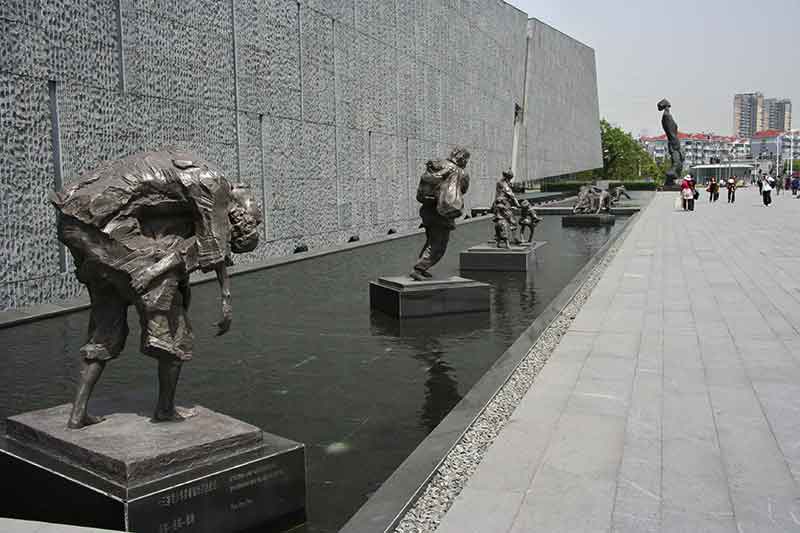 To the outside world, Nanjing is best known for the atrocities visited upon it by the Japanese invaders in 1937. During a 60 day period they killed 300,000 people, raped almost the entire female population, and flattened much of the city. The whole, grotesque saga is depicted in graphic detail in the Memorial Hall of the Massacre. The entire depressing display crushes the human spirit, providing a terrible reminder of how inhumane and dreadful war can be. Short poems, written on bronze statues outside, stir very strong emotions. How the conquerors can treat the vanquished as if life had no value.
To the outside world, Nanjing is best known for the atrocities visited upon it by the Japanese invaders in 1937. During a 60 day period they killed 300,000 people, raped almost the entire female population, and flattened much of the city. The whole, grotesque saga is depicted in graphic detail in the Memorial Hall of the Massacre. The entire depressing display crushes the human spirit, providing a terrible reminder of how inhumane and dreadful war can be. Short poems, written on bronze statues outside, stir very strong emotions. How the conquerors can treat the vanquished as if life had no value.
Most of the film footage and photographs had been taken by Japanese soldiers or reporters and tell the story of the bombings, the occupation and the killings. The captured Chinese soldiers were machine gunned, priests and monks shot, civilians were bayoneted in front of mass graves or tied to posts and used for live practice. Many were beheaded. One area told the tale of two soldiers, that was widely reported in the Japanese press, of how they had a race to be first to behead 100 people. At the time of the various newspaper clippings praising their valour, one had managed 105 beheadings and the other 110, but they didn’t know who had reached 100 first. So they now had a new target: first to 150. There were photographs depicting them in the act of execution. Unbelievable.
The history neglects to mention that the fleeing Chinese government locked the city gates, urging their fellow countrymen to resist (unlike the leaders), trapping the entire population. Nor does it mention that it was the US bombings in Japan that brought an end to the occupation, rather that the magnificent resistance of the people finally freed them of the ‘devil invaders’. However, this doesn’t detract from the huge impact that the museum leaves on the visitor. At the same time, I wonder what it does for Sino-Japanese relations.
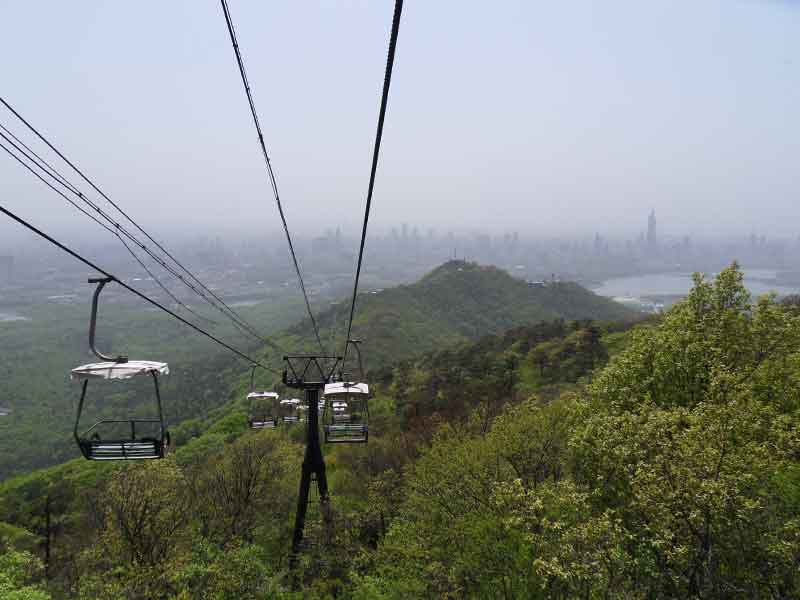 A rather more uplifting trip was the ascent of the Zijin Mountain (known as the purple mountain for some reason) that dominates the eastern fringes of Nanjing. It’s only a hill in reality as the summit is a mere 450 metres but it is a beautiful, thickly forested area that is a popular escape in the summer from the steamy city. At the top there are panoramic, if somewhat hazy, views of Nanjing that bring into sharp focus just how large a place this is (home to 5.5m people). The skyscrapers in the main downtown area bring a modern aspect to the scene and the lower stretches of the Yangtze River wind through the suburbs.
A rather more uplifting trip was the ascent of the Zijin Mountain (known as the purple mountain for some reason) that dominates the eastern fringes of Nanjing. It’s only a hill in reality as the summit is a mere 450 metres but it is a beautiful, thickly forested area that is a popular escape in the summer from the steamy city. At the top there are panoramic, if somewhat hazy, views of Nanjing that bring into sharp focus just how large a place this is (home to 5.5m people). The skyscrapers in the main downtown area bring a modern aspect to the scene and the lower stretches of the Yangtze River wind through the suburbs.
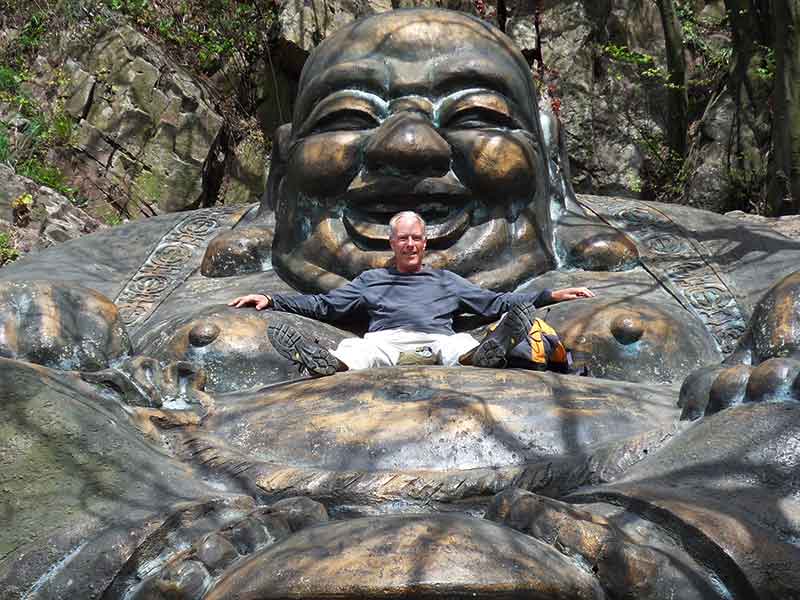 Near the bottom of the mountain is the Jiming Temple (which literally translates as ‘rooster crowing’ – where did that come from?), which was first built in AD 527 and certainly looks its age (despite being rebuilt several times). It’s a Buddhist temple that seemed to be occupied exclusively by female monks, strolling around in long gowns with their heads shaved. It has a tower that we were allowed to climb in which the jagged cross used by the Nazi party is emblazoned in every window. I have not yet got to the bottom of the symbol’s significance to Buddhism but it was certainly a surprise to us to see it used all over the temple.
Near the bottom of the mountain is the Jiming Temple (which literally translates as ‘rooster crowing’ – where did that come from?), which was first built in AD 527 and certainly looks its age (despite being rebuilt several times). It’s a Buddhist temple that seemed to be occupied exclusively by female monks, strolling around in long gowns with their heads shaved. It has a tower that we were allowed to climb in which the jagged cross used by the Nazi party is emblazoned in every window. I have not yet got to the bottom of the symbol’s significance to Buddhism but it was certainly a surprise to us to see it used all over the temple.
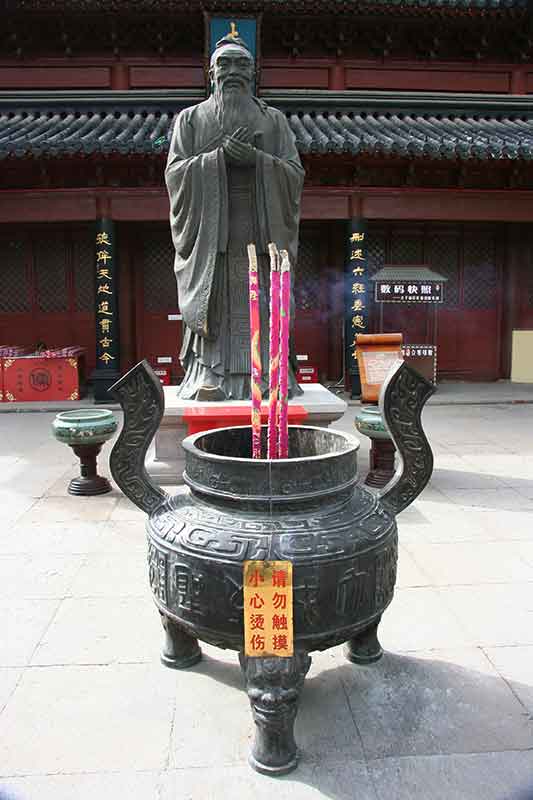 As a complete contrast, we also visited the Fuzi Temple located in a pedestrian zone in the city centre. This was the centre of Confucian study for more than 1,500 years and is a firm reminder of how great the influence of Confucian humanist philosophy is and has been on the core of Chinese life. At its centre lies a code of human morality that has taken on the role that religion plays in other cultures. The philosophy centers on five hierarchical relationships: father–son, ruler-subject, husband-wife, elder brother-younger brother and friend-friend. Confucius believed that if each individual carried out his or her role in society (i.e. a son served his father respectfully while a father provided for his son, a subject served his ruler respectfully whilst a ruler provided for his subject and so on) social order would be achieved. In China the influence can be seen in everything from the emphasis on education and respect for elders to the patriarchal role of the government.
As a complete contrast, we also visited the Fuzi Temple located in a pedestrian zone in the city centre. This was the centre of Confucian study for more than 1,500 years and is a firm reminder of how great the influence of Confucian humanist philosophy is and has been on the core of Chinese life. At its centre lies a code of human morality that has taken on the role that religion plays in other cultures. The philosophy centers on five hierarchical relationships: father–son, ruler-subject, husband-wife, elder brother-younger brother and friend-friend. Confucius believed that if each individual carried out his or her role in society (i.e. a son served his father respectfully while a father provided for his son, a subject served his ruler respectfully whilst a ruler provided for his subject and so on) social order would be achieved. In China the influence can be seen in everything from the emphasis on education and respect for elders to the patriarchal role of the government.
One final delight that the city had to offer lay in its university district where the presence of an American endowed Chinese language culture exchange college had sprouted a European style delicatessen and a restaurant that offered a hotch potch of European dishes and which had a New Zealand sauvignon blanc on its alcohol list. A crispy bun filled with cheese, tomato and onions at lunchtime and a dinner with wine were a treat that raised the morale significantly after a constant diet of Chinese food. Like the city, it was a pleasant change and I cannot tell you how glorious it was to eat simple, familiar food and to drink class wine again. We were ready for the next challenge.

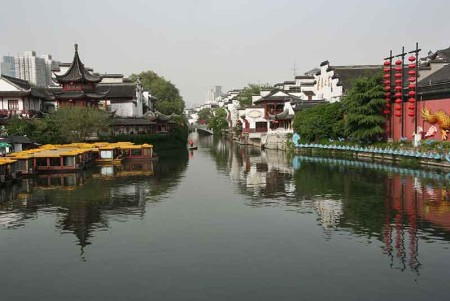
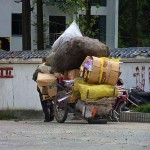
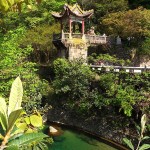
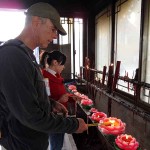
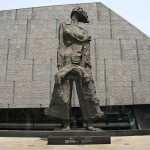
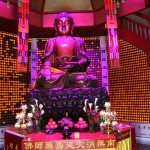
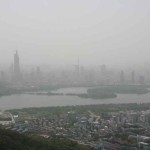
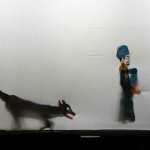
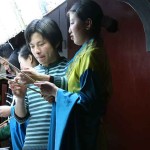
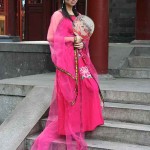
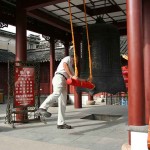
No comments yet.